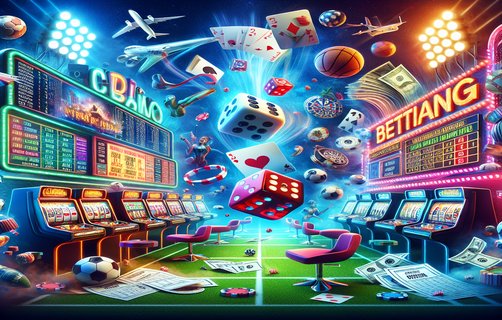The Art of Strategy in Gambling: Navigating Poker, Tournaments, and Industry Trends

In the sultry dimness of a high-stakes poker room, a group of players leaned into their cards, faces etched with concentration. At a nearby table, the synthetic glimmer of a Betsoft slot machine awaited its turn, agitating the atmosphere with its underlying thrill. This evening represented the new era of gambling where skill and technology intertwined. As tech innovations burgeon, the rise of multi-table tournaments combined with intricate poker bluffing strategies has made the world of poker increasingly engaging for both novice players and experts alike.
Among the many contenders in this gambling realm, Ryan, a seasoned poker player, had just settled into his chair. He was eager, not only to dial up his bluffing tactic but also to gauge his opponents' calling ranges. With a decisive look, he glanced across the table, observing the patterns and habits of his fellow players. Knowledge of opponents’ betting behaviors is akin to understanding their very thoughts—a critical prelude to mastering the game. Each player had a unique way of valuing hand strength, and Ryan was no exception. He meticulously crafted a calling range refined over countless hours of play. To him, it was more than just a number; it was a philosophy that encapsulated his gameplay.
Bursting into the scene of strategy was the chip leader, whose stack towered like a skyscraper. He applied pressure on opponents with a strategic blend of aggression and ante strategies. As blinds increased, so did the ante, forcing the players to adapt quickly. Ryan revered this player’s ability to manipulate opponents into making costly decisions, an art that elevated the poker game to heights he aspired to reach. Little did they know, the impending multi-table tournament was beckoning, promising bigger pots and greater glory.
As the tournament unfolded, Ryan encountered rapid-fire decisions akin to playing on a speed dial. Every division multiplied excitement as players flitted between tables. This multitasking showcased an entirely different skill set—one of foresight and emotional control. The thought of fast loading games appealed to Ryan, fueled by the gaming industry's technological advancements that embraced speed and fluidity. It unraveled opportunities to engage seamlessly at multiple tables, challenging players to maintain their edge over an evolving field.
In the larger context, the gambling industry news rippled through the courtyard of innovation. With emerging trends in online gaming being fueled by virtual and augmented realities, the high-stakes environment Ryan had embraced was transforming. Casino operators, in a bid to attract tech-savvy Millennials and Generation Z, were flocking to develop more intricate gaming interfaces that promote social experiences.

As Ryan returned to the table victorious, he reflected on the lessons interlaced within each hand. Bluffing had not merely been a display of bravado; it was a nuanced dance between risk and reward. The terminaries of his opponents, the stakes of the fast loading tournaments, and the innovations within the gaming industry intertwined to form an elaborate tapestry of strategy and opportunity. The thrill of poker emanated from a collective consciousness, a resilient blend of advancing technology, keen perception, and the unyielding human spirit—all guiding Ryan not just to win but to embrace the essence of the game.
